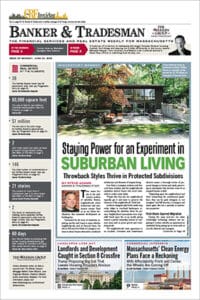
Edd Hamzanuli
As the founder of MassCan Capital, a real estate development firm focused on sustainable and equitable housing, I have spent years analyzing the structural barriers that prevent Massachusetts from meeting its housing needs.
One of the most transformative yet under-discussed solutions is legalizing two- and four-family construction on residential lots statewide.
Gov. Maura Healey’s Unlocking Housing Production Commission recently proposed this policy, which, if enacted, would dramatically expand housing supply and affordability across the state.
Currently, in most Massachusetts communities, two-family homes are not permitted by right, requiring discretionary approval. This proposal would legalize two-family homes statewide and allow four-family homes on lots with existing water and sewer infrastructure. It also removes minimum parking requirements, a regulatory burden that has long hindered housing development.
By making these changes, the state would empower small developers and property owners to create housing at scale, reducing the reliance on costly and bureaucratic large-scale developments.
Why This Policy Matters
Two- to four-family homes are far simpler to design and construct than large-scale developments, making them accessible to small, local builders who may lack the capital or expertise for bigger projects. This broadens participation in housing development, enabling a diverse range of professionals to contribute.
Financing is also more straightforward. Unlike large apartment buildings that rely on complex financing structures and institutional investors, two- to four-family projects can often be funded through personal savings, local lenders or small investment groups.
This allows more individuals to become developers, encouraging community-driven housing solutions while strengthening local economies. This not only fosters community investment but also strengthens local economies by keeping financial resources within the region.
The smaller scale and height of two- to four-family buildings also allow them to blend seamlessly into existing neighborhoods, preserving the aesthetic and character of residential areas. Their design often mirrors that of single-family homes, making them visually indistinguishable from their surroundings. This minimizes concerns about disrupting the “feel” of established communities, a common objection to denser housing developments.
The potential scale of this policy is immense.
By allowing every single-family lot to support two to four units, Massachusetts could unlock hundreds of thousands of new housing opportunities without requiring additional land or demolishing existing structures. Additionally, these smaller homes are increasingly in demand due to changing family sizes, lifestyles and economic realities. By aligning with the needs of first-time homebuyers and downsizing households, this policy makes homeownership more attainable and sustainable.
Unlike many housing initiatives, this policy does not rely on taxpayer-funded subsidies, grants or incentives. Instead, it harnesses private investment and existing infrastructure to expand housing supply. By reducing unnecessary zoning restrictions, it allows the market to respond naturally, increasing housing production without government intervention.
This fiscally responsible approach expands homeownership opportunities while strengthening local economies – all without adding financial strain to public budgets.
The Economic Case
Consider a 20,000-square-foot lot in Eastern Massachusetts worth $200,000.
Under current zoning, it might accommodate a single 2,400-square-foot home selling for over $1 million – far beyond the reach of most families. If the zoning law changed, that same lot could host four townhomes, each between 1,200 and 1,400 square feet, selling for $500,000 to $600,000. These homes would be affordable to households earning around $150,000 – a far more attainable price point for working professionals and middle-class families.
This not only expands homeownership opportunities but also benefits local governments. The property tax revenue from four townhomes would exceed that of a single large home, helping fund schools, infrastructure and public services.
This policy aligns with the concept of “missing middle housing,” which refers to duplexes, triplexes and small multifamily units that bridge the gap between single-family homes and large apartment buildings. These housing types were once common in Massachusetts but have been largely banned by restrictive zoning laws. Reintroducing them would create more diverse, walkable communities while alleviating housing shortages.
The American Enterprise Institute has extensively researched the benefits of what it calls “light-touch density, which allows moderate increases in density without drastically altering neighborhood aesthetics. Massachusetts, with its deep housing deficit, should embrace light-touch density as a logical and effective solution.
By embracing this policy, Massachusetts can unlock a vast supply of housing, reduce costs and provide more opportunities for homeownership. It’s a bold step toward addressing the state’s housing shortage while fostering economic growth and community development.
Edd Hamzanuli is the founder of Norwood-based development firm MassCan Capital.






